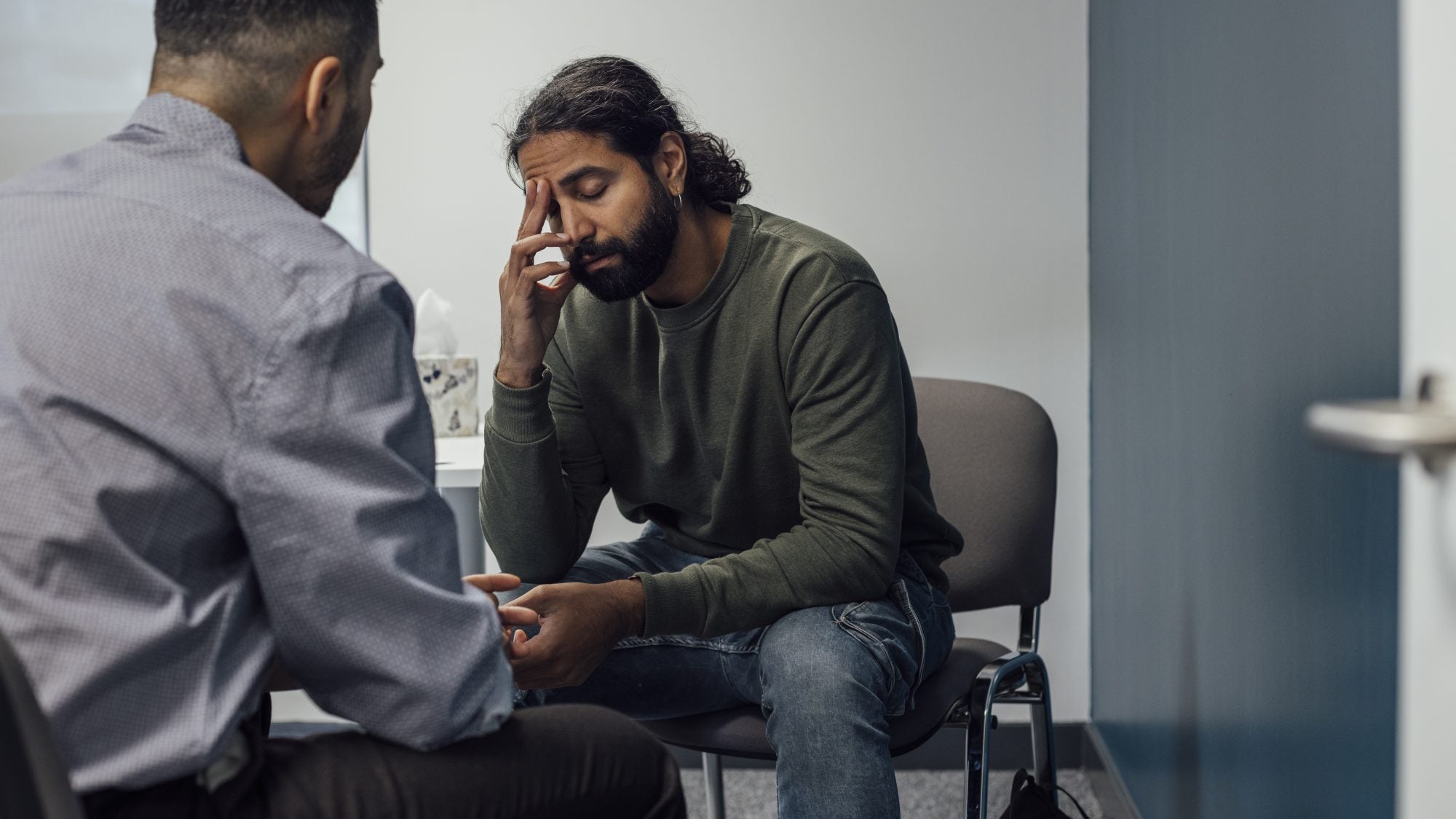Americans have become more anxious year after year.
In 2024, 43% of adults said they felt more anxious than in the previous year, compared to 37% in 2023 and 32% in 2022, according to the American Psychiatric Association’s annual mental health poll.

Some therapists might recommend pushing back against negative thoughts, said Andrea Bonior, a teaching professor of psychology in the College of Arts & Sciences and a licensed clinical psychologist. But that might not always be the answer.
“Classical cognitive behavior therapy says to challenge the thoughts. That can work,” said Bonior. “But for people where it’s constant negative thoughts, they’re in a cycle of ruminations, and we refer to those thoughts as sticky. What tends to happen for those folks who constantly challenge negative thoughts is that they become exhausted.”
Rather than fight their thoughts, Bonior recommends patients practice acceptance and commitment therapy, which is rooted in mindfulness and gently observing one’s thoughts.
Learn more about Bonior’s clinical approach as she explains why we have negative thoughts and how we can manage them to improve our mental health.
Ask a Professor: How to Help Manage Anxiety and Negative Thoughts
Why do we get negative thoughts?
There are times when we are more sensitive to negative thoughts than other times, and we do have a bias towards negative thoughts and pay them more attention compared to positive thoughts. It’s important to recognize that it’s natural because it’s kept us alive for tens of thousands of years. If we didn’t have a sensitivity to threat, we would not have survived as a species. It’s biological in nature. Our nervous systems are wired to pick up threats, which in turn makes us more likely to perceive things negatively.
What happens in the brain when we get negative thoughts?
If we are having negative thoughts, we are more likely to be sensitive to threat, so our amygdala is going to be more active. The amygdalae are these two threat detectors in the brain that start the process of activating the nervous system that is required in fight or flight.
Your nervous system can be broken down into several branches, and within the autonomic nervous system, we have the sympathetic and parasympathetic nervous systems. The sympathetic nervous system is what activates the threat response. What is key is that the parasympathetic nervous system can bring it back to equilibrium.
The problem with the experience of chronic stress or negative thoughts is that the parasympathetic nervous system starts to fall down on the job, so you’ve got this chronic, heightened state of arousal. That’s why people see long-term stress responses when they can’t fall asleep well anymore. We know it can lead to inflammation and that it’s not good for your heart. This is why chronic stress over time can be damaging.





